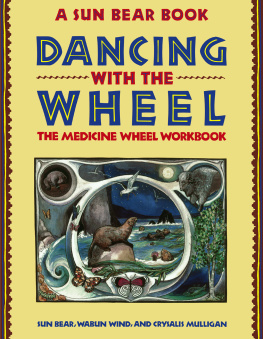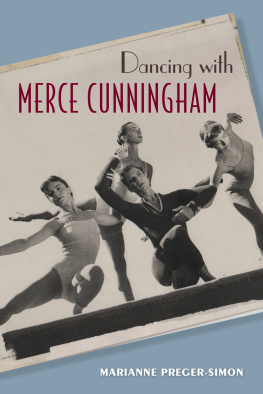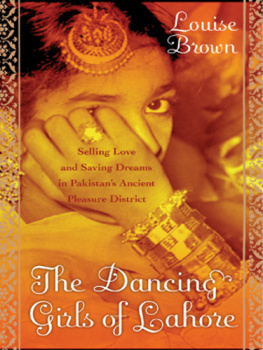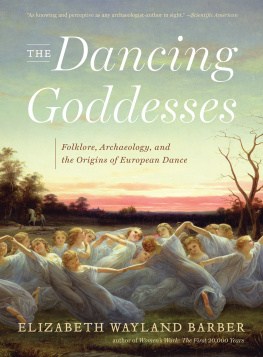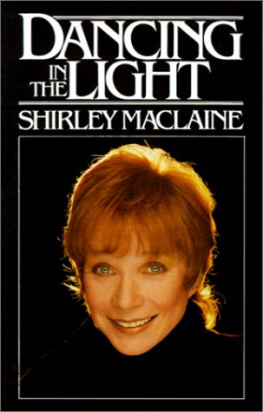
DANCING IN ALL AGES
BY
EDWARD SCOTT
AUTHOR OF
DANCING (DOUBLE VOLUME) IN THE ALL ENGLAND SERIES
ETC.

PREFACE
IN writing the following pages, it has been my endeavour to furnish some information concerning the practice of dancing which has not hitherto found a place in treatises upon the subject. To the dances of barbarous countries and primitive tribes my attention has not here been given. I have briefly traced the rise, progress, and, I fear it must be added, decline of the art among certain civilised nations from the earliest ages to our own times. So far as my memory would allow, acknowledgment has in all cases been made of the sources whence facts have been obtained, or authors have been cited in whose works a verification of statements may be found; but, of course, for deductions drawn therefrom, and views advanced, unless otherwise specified, I am myself responsible.
For information respecting the ancients, and their manner of dancing, I have frequently consulted the works of Herodotus, Plato, Xenophon, Aristophanes, Athenus, Pausanias, the Roman historians, and, somewhat warily, Lucian. Among modern authors, I am indebted to Wilkinson, Birch, Rawlinson, Mller, and Donaldson; while the technical writers who have afforded the greatest assistance are, I think, Jehan Tabouret, Rameau, and Noverre. The above-mentioned, however, are only a few among many authors, ancient and modern, to whom due acknowledgment is made in the text. To the observant reader it will also be evident that much information has been gathered from the study of sculptures, pottery, pictures, and other archological and modern exhibits to be found in museums and art galleries both at home and abroad.
Unlike my predecessors in this field of research, I have adopted the plan of keeping distinct and considering separately the dances of each of the great nations of antiquity, and have described them, so far as was practicable, in chronological order. This course certainly renders the work more convenient for purposes of reference, and also, I venture to think, of greater interest to the general readeran interest which it has been my endeavour to enhance by the introduction of appropriate anecdotes and stories.
I should perhaps mention that the earlier chapters of the present work were begun some years since with a view to their being incorporated with a practical treatise on dancing, now published as a double volume in the All England Series of Handbooks. The historical aspects of the art, however, possess considerable interest for the author, and the work soon grew to larger proportions than was at first anticipated. Accordingly I decided to keep the historical and critical chapters distinct from those purely practical, and eventually produce them as a separate and complete volume.
This task, which was set aside for a while, has now been resumed in the belief that, being written on entirely different lines, the present work will not in any way clash with existing volumes. It will be noticed by those who have perused the agreeable pages, for which Mrs. Groves is chiefly responsible, that although a somewhat wide geographical range is covered by her research, all that she has to say about the dances of ancient Egypt, Greece, and Rome is contained in a very few pages, and that but little information is given concerning the most famous dances of modern times. I believe that for the present work, so far as it goes, I may fairly claim greater thoroughness and accuracy of detail than has hitherto been found in historical treatises on dancing. Moreover, when writers on this subject frankly confess to having no practical knowledge thereof, it would seem that there is sufficient room for the critical and descriptive efforts of those who, in addition to literary research, have made a conscientious study of the art in theory and practice.
EDWARD SCOTT.
ROCHESTER HOUSE, ROCHESTER GARDENS,
WEST BRIGHTON,
AND LONDON.
CONTENTS
DANCING IN ALL AGES
CHAPTER I.
THE NATURE AND ORIGIN OF DANCING.
AS a spontaneous expression of emotion by bodily action, dancing must have existed from the remotest ages. Its true source lies in the nature of our organism. Sudden or intense excitement causes a more than usually rapid oxidation of brain tissue, and physical exertion is the natural outlet by which the overcharged brain is relieved. For this reason a child jumps with delight when informed of a pleasure in store for him. Savages are in many respects like children, and express their feelings in a similar manner, often executing wild dances without order or design. If, then, it were possible for us to travel back to those unhappy far-off times before the dawn of civilisation, when palolithic man first cooked his food in a hole dug in the ground and filled with water and hot stones, doubtless we should find him executing an improvised dance of delight around his primitive cauldron as he watched the seething liquid in anticipation of the delicacy he was about to enjoy.
But the capacity for this kind of dancing, which results from excess of vitality, is by no means confined to human beings. It is shared by many animals. A dog dances with delight when he sees his master; a horse prances to the sound of music; there are birds that dance; and of young lambs Thomson, in his Castle of Indolence, sings,
Rampant with life, their joy all joy exceeds,
Yet what but high-strung health this dancing pleasure breeds?
Natural dancing, which is merely a vigorous leaping motion of the body under the influence of suddenly awakened sensibility, is not, however, the kind of dancing that we are about to consider in the following pages. It is only the original from which the movements hereafter to be described have developed. The act of dancing can in no sense be regarded as mans invention; it belongs to his nature. In its infancy, so to speak, It is only the dancing that, to borrow Grotes expression, has been transferred from the field of spontaneous nature to the garden of art, dancing that is subject to definite rules, that can properly be regarded as the invention of man.
And now, before proceeding further, let us pause to consider what it is that really constitutes dancing in the generally accepted sense of the term. In the course of my life I have found opportunities to peruse many books bearing directly or indirectly upon the subject, books both ancient and modern; but I do not remember ever to have come across a satisfactory explanation of the difference between what we, by common tacit consent, understand as dancing, and other bodily movements. Where so many others have failed, I too am likely to fail; but, all the same, I will endeavour to make the difference clear.
It is quite usual to define dancing as being a rhythmical movement of the body regulated by music. This is all very well so far as it goes, but such a definition obviously includes walking or marching in measured steps to the accompaniment of some melody. The difficulty of framing a suitable definition is apparent when we consider that the movements employed in dancing are all framed upon our three natural means of locomotion: walking, running, and jumping. Even the most complicated steps are framed upon natural movements accompanied by turnings of the body, but many graceful dances consist merely of actions similar to those we employ in every-day life. What, then, constitutes the difference between running, walking, leaping, and dancing? It is not the accompaniment of music, or even the employment of rhythm, for we may run, walk, or jump in rhythmic measure, and in time to music, and yet our movements may not appear like dancing; while a dance will still appear to be such, even if unaccompanied by the sound of music. As in the Witches Chorus, we may dance to the echoes of our feet.
Next page

